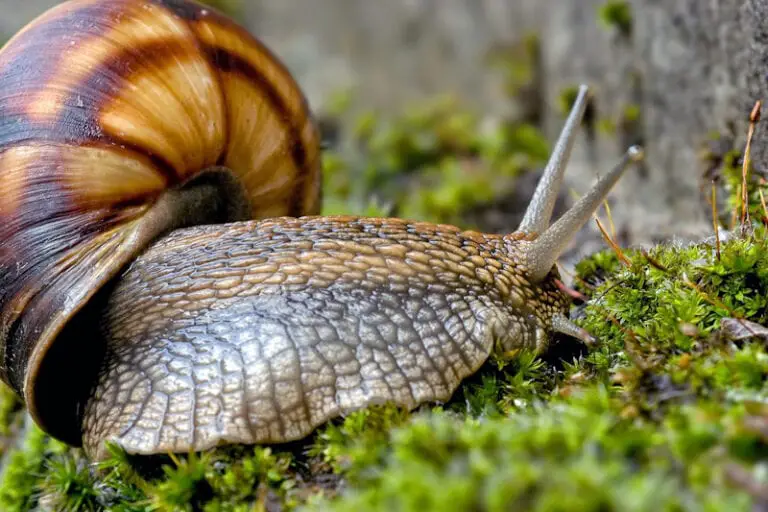Do Snails Have Ears? – Unraveling the Mystery of Snail Hearing
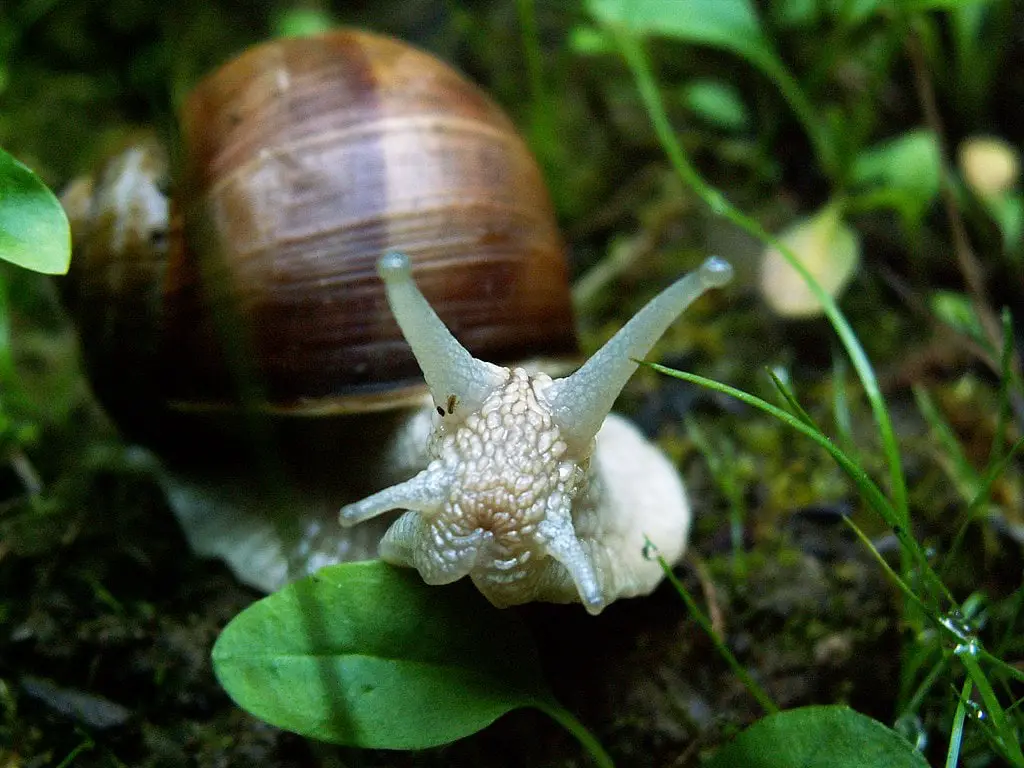
Imagine coming across a snail on a dew-kissed leaf in your backyard, or spotting one tracing a slow, determined path on a rainy sidewalk. This encounter might make you wonder – how do these tiny creatures experience the world around them?
We’re glad you asked. Welcome to our friendly deep-dive into the sensory life of snails. We’ll be exploring the ways these interesting little guys interact with their environment, from how they use vibrations to sense what’s happening around them, to their ability to smell the world in their own unique way.
Whether you’re a snail enthusiast, a keen gardener, or just someone who enjoys learning about the little wonders of nature, this guide will shed light on the seldom-understood senses of the snail.
Ready to take a leisurely stroll through the sensory world of snails? Let’s get started!
Understanding Snail Anatomy and Senses
Snails are remarkable creatures with unique adaptations that allow them to survive in various environments. To understand how snails perceive their world, we must first take a closer look at their anatomy and sensory organs.
| Sensory Organ | Function |
|---|---|
| Eyes | Snails have two pairs of eyes, with one pair located at the end of their tentacles. These eyes can detect changes in light and dark, but cannot form images like human eyes. |
| Tentacles | Snails have two pairs of tentacles, with the longer pair equipped with eyes. The tentacles play a vital role in the snail’s sense of touch, taste, and smell. |
| Mantle | The mantle is a specialized tissue located above the snail’s foot that produces mucus. The mucus is used for locomotion, as well as sensing the environment. |
| Foot | The foot is a muscle that is used for movement and helps snails navigate their environment. It also contains specialized cells that can detect chemicals and vibrations. |
In addition to these sensory organs, snails also have a unique sense of gravity, which helps them orient themselves and move in a particular direction. This sense is located in the snail’s statocysts, small organs that contain tiny hairs and crystals that move in response to gravity.
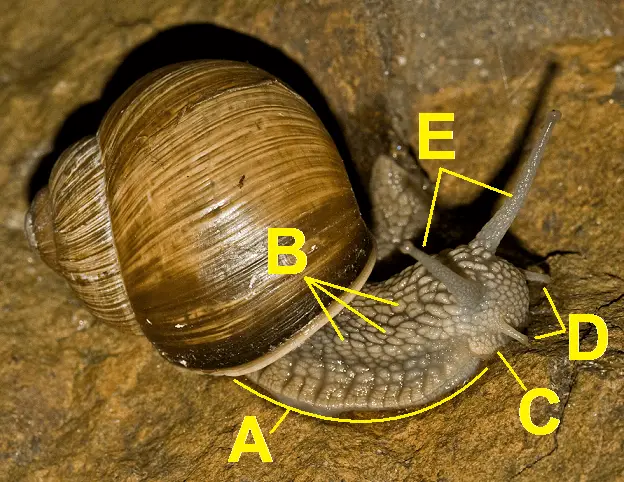
- A = Foot: The muscular organ that propels the snail, located on the underside of the animal’s soft body.
- B = Tubercles (pending confirmation): Small, raised bumps on the snail’s exterior body.
- C = Lower Antennae/Tentacles: These are shorter sensory appendages on the snail’s head, possibly involved in detecting scents and orientation.
- D = Upper Antennae/Tentacles: These are the longer sensory appendages on the snail’s head, also possibly involved in detecting scents and orientation.
- E = Eye Tentacles: These are the tentacles that have eyespots at their tips, which the snail uses for visual orientation.
Senses and Perception
Snails perceive their environment through a combination of touch, taste, smell, and sound. Touch receptors located on their foot and tentacles allow them to detect texture and temperature. Their sense of taste is closely linked to their sense of smell, with chemicals detected by specialized cells located in the tentacles and foot.
Snails are also incredibly sensitive to their environment’s smell, and can detect potential danger or food sources with their sense of smell. Lastly, their ability to hear low-frequency sounds allows them to sense vibrations and detect potential threats approaching from a distance.
Overall, snails’ senses are highly specialized to help them navigate their environment, find food, and avoid danger. The unique structure of their sensory organs and adaptations have allowed them to thrive in a wide range of habitats.
How Do Snails Hear?
Snails may not have ears in the traditional sense, but they do have a remarkable ability to sense sound vibrations. Snail’s hearing is quite different from that of humans and other animals, as it relies on unique sensory organs located on their tentacles.
The tentacles contain sensory cells that are sensitive to vibrations in the environment. As sound waves travel through the air, they cause the snail’s tentacles to vibrate. These vibrations are then detected by the sensory cells, which send signals to the snail’s brain for interpretation.
The snail’s sensory cells are incredibly sensitive, allowing them to detect even the faintest of sounds. This ability is vital for snails, as they use sound to communicate with each other, find food, and avoid predators.
In addition to their tentacles, snails also have a small patch of hair-like cells located on their foot. These cells, known as the statocysts, help the snail maintain its balance and orientation. They also play a role in detecting low-frequency sounds, such as those produced by approaching predators.
Overall, snails may not have ears as we know them, but their unique and highly sensitive sensory organs allow them to perceive and interpret sound in their environment.
The Role of Snail’s Tentacles in Sensing
Snails are distinctive creatures with unique sensory abilities, and their tentacles play a crucial role in their perception of the environment. These slimy appendages are not just for show; they serve as vital sensory organs that aid in the detection of touch, taste, and smell.
The tentacles of a snail come in pairs, with one pair located on the head and one pair further down the body. Each pair of tentacles serves a different purpose, with the upper pair aiding in the detection of light and the lower pair serving as the primary sense organ for touch and smell.
The lower tentacles are covered in tiny sensory cells that can detect chemical signals in the environment. This enables snails to locate food, identify potential dangers, and communicate with other snails.
The tentacles of a snail are highly sensitive, and even the slightest touch can trigger a response. When threatened, the snail will retract its tentacles into its shell for protection.
| Tentacles | Function |
|---|---|
| Upper Pair | Aid in the detection of light |
| Lower Pair | Primary sense organ for touch and smell |
In addition to aiding in sensory perception, the tentacles of a snail are also involved in its locomotion. The lower tentacles are used to feel the ground and help the snail navigate its way forward, while the upper tentacles detect obstacles in the path.
Overall, the tentacles of a snail serve as a vital tool for survival and play a significant role in the creature’s perception of the world around it.
Snail Perception and Communication
Snails use their senses to perceive and communicate with their surroundings, and other snails.
The Role of Touch in Snail Communication
Snails communicate with each other through touch. They use their tentacles to contact other snails and exchange information. The touch allows them to sense each other’s size, shape, and texture, which can indicate reproductive readiness, food availability, or social hierarchy.
The Importance of Chemical Signals in Snail Communication
Snails also communicate through chemical signals. They release pheromones to attract mates, signal danger, or mark territory. Pheromones can be detected by other snails through their sense of smell, which is located in their tentacles.
The Use of Sound in Snail Communication
Although snails are not known for their vocal abilities, they can produce sounds by rapping their foot against a surface. These sounds can be used to communicate with other snails, especially when seeking a mate or warning of danger.
Overall, snails have a surprisingly sophisticated system of communication and perception, which helps them navigate their environment and interact with each other.
Snail Habitat and Behavior
Snails have adapted to survive in a variety of habitats. Their sensory abilities play a crucial role in their behavior and lifestyle.
Some snail species are found in damp forests, while others thrive in freshwater environments. The snail’s sensory organs, particularly their sense of smell and touch, help them navigate and find food in their respective habitats.
| Snail Habitat | Snail Behavior |
|---|---|
| Desert | During the day, snails burrow into the sand to avoid the heat and dryness. They come out at night to feed and move around. |
| Forest | Snails in forests prefer damp and shaded areas where moisture-loving plants grow. They move slowly and use their sense of smell to locate food. |
| Water | Aquatic snails can be found in rivers, lakes, and ponds. They have gills to extract oxygen from water and use their sense of touch to find food and navigate their environment. |
Snails also exhibit interesting behavior when it comes to mating and reproduction. For example, some species have both male and female reproductive organs and can fertilize themselves. Others have elaborate courtship rituals and communicate through scent and touch.
The snail’s habitat and behavior are closely linked to their sensory abilities, and understanding this connection gives us a deeper appreciation for these remarkable creatures.
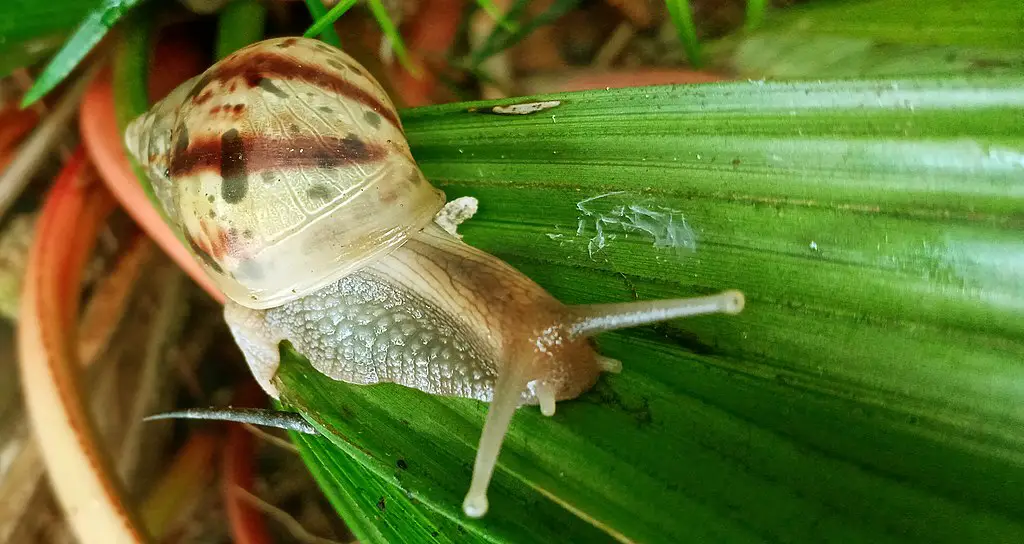
Types of Snails and Their Unique Senses
Snails are a diverse group of mollusks found in different habitats around the world. They have evolved unique senses to adapt to their surroundings. Let’s take a look at some of the types of snails and their remarkable sensory abilities.
Land Snails
Land snails are found in a variety of environments, from deserts to forests. They possess an exceptional sense of smell, which they use to locate food and potential mates. Their sense of touch is also well-developed, with sensory cells located in their tentacles and foot.
Aquatic Snails
Aquatic snails are found in freshwater and saltwater environments. They have evolved specialized gills that not only allow them to breathe but also detect dissolved chemicals in the water. Additionally, some aquatic snails have developed eyes that can detect polarized light, which they use to navigate.
Cone Snails
Cone snails are a venomous group of sea snails found in tropical waters. They have a highly specialized sense of touch, with a long, retractable proboscis that they use to sense their environment. In addition to touch, cone snails have developed a unique venom that they use to incapacitate their prey.
Giant African Land Snails
Giant African land snails are a popular species kept as pets due to their large size and colorful shells. They have evolved a strong sense of smell, with sensory cells located in their tentacles. They can also retract their tentacles entirely into their shell to protect them from harm.
Garden Snails
Garden snails are a common species of land snail found throughout the world. They have a well-developed sense of smell, which they use to locate food and potential mates. In addition, they have specialized optic tentacles that sense light and dark and help them navigate their environment.
Overall, snails possess an incredible range of sensory abilities that allow them to thrive in their respective habitats. From specialized tentacles to venomous proboscises, snails have developed unique adaptations that make them a compelling group of animals to study and admire.
Snail Life Cycle and Sensory Development
Like many organisms, snails go through a life cycle that involves distinct stages of development. As these stages progress, their sensory abilities continue to evolve and adapt to their environment.
Snails are born as small hatchlings, typically with undeveloped eyes and a basic sense of touch. As they grow, their eyes and other sensory organs begin to mature, allowing them to perceive their surroundings more clearly. By the time they reach adulthood, snails have a fully developed sensory system that enables them to navigate their environment with ease.
Senses in Early Life
For newly hatched snails, touch is the primary sense used for exploring the environment. Their tentacles are essential for this, and they use them to explore their surroundings and to locate food. As they grow and develop, their sense of touch becomes more refined, allowing them to detect more subtle sensations.
Snails also have a rudimentary sense of smell from early on, which is used for finding food and detecting predators. This sense improves with age so that adult snails can detect even faint odors.
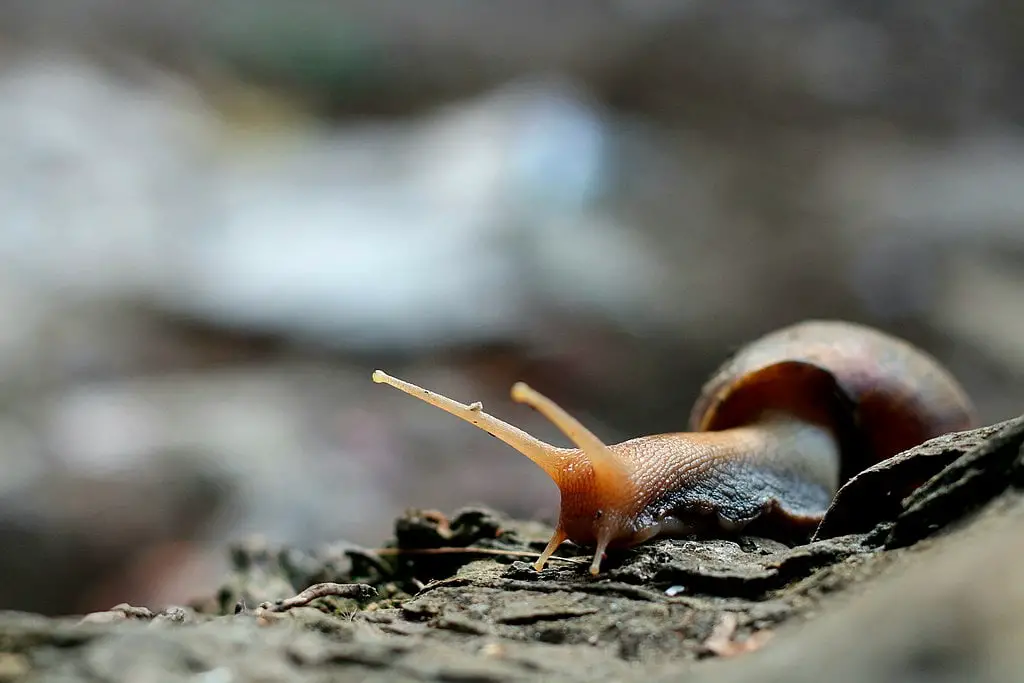
Development of Other Senses
As snails grow, their eyes begin to develop, providing them with a sense of sight. While snails don’t rely heavily on their vision, it is still an important component of their sensory system. Their eyes are capable of detecting changes in light and dark environments, as well as basic shapes and movement.
In addition to touch, smell, and sight, snails also have a highly developed sense of taste. Their mouth contains a specialized organ called a radula, which is used for scraping and breaking down food particles. This organ contains sensory cells that allow the snail to detect chemicals in the food, helping them to identify and locate sources of nutrition.
Adapting to the Environment
The sensory abilities of snails are highly adaptable and vary according to their environment. For example, aquatic snails have evolved specialized senses that help them navigate in water, while land-dwelling snails rely more heavily on their sense of smell and touch. In some cases, snails have even developed unique adaptations, such as the ability to detect magnetic fields, which helps them navigate and orient themselves.
Overall, the life cycle of a snail is closely tied to the development of its sensory system. As they grow and mature, their senses become more refined, enabling them to better navigate their environment and find sources of food and shelter.
Snail Diet and Its Impact on Senses
Snails are well-known for their slow movements and their love for eating plants. A snail’s diet plays a significant role in shaping its sensory perception. The food they consume can affect their sense of taste and smell, as well as their ability to find food and avoid predators.
Most snails are herbivores, meaning they primarily eat plants. They consume a variety of vegetation, including leaves, stems, and flowers. Some species, such as the Roman snail, have a more diverse diet that includes insects and fungi.
The composition of a snail’s diet can impact their sensory organs, specifically their taste buds. Some plants produce toxic chemicals to ward off herbivores, and snails that consume these plants may develop a stronger aversion to certain tastes.
In addition to taste, smell also plays a crucial role in a snail’s dietary habits. Snails use their sense of smell to find food, mates, and potential dangers. For instance, snails can smell the presence of predators in the area and retreat into their shell or close their operculum to protect themselves.
Snails have developed an impressive set of adaptations to help them find and consume the plants they need. One such adaptation is their unique radula, a ribbon-like appendage with rows of small teeth that grind food before it moves into their digestive tract.
Interestingly, some snails have also developed a taste for calcium, which is vital for building their shells. They may consume not just vegetation but also the shells of dead snails and eggs to supplement their calcium intake.
In summary, a snail’s diet has a significant impact on their sensory perception and behavior. Their sense of taste and smell is crucial to finding food and avoiding danger, and their unique adaptations enable them to consume vegetation, calcium, and other nutrients that support their survival.
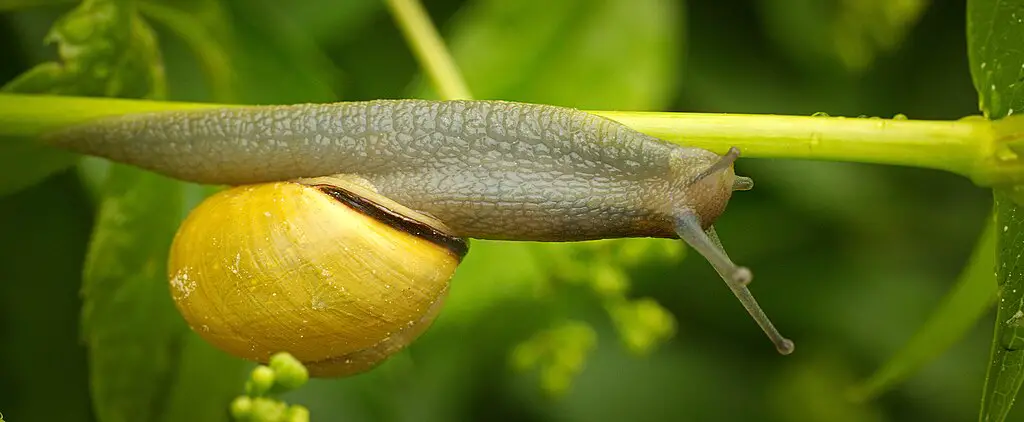
How Do Snails Move and Navigate?
Snails are unique creatures known for their slow movements and distinct anatomy. Despite their sluggish pace, snails are capable of navigating their environment with remarkable precision.
Their movement is made possible by a combination of muscular action and the secretion of mucus. By contracting and expanding their muscles, snails can extend and retract their bodies, allowing them to move forward or backward. The secretion of mucus acts as a lubricant, enabling them to glide smoothly along surfaces.
Snails also possess a unique sense of navigation. They use their tentacles to detect changes in the environment, such as humidity levels and air currents. In addition, they are able to sense changes in light and temperature. These sensory organs allow them to identify potential dangers and locate sources of food or water.
Snails are also capable of homing, meaning they can navigate back to a specific location from which they have previously traveled. This ability is thought to be linked to their sense of smell, as they are able to detect and follow scent trails.
Frequently Asked Questions
Do snails have eyes?
Yes, snails do have eyes. Some species of snails even have multiple pairs of eyes, while others have just one. These eyes are situated at the ends of their tentacles and are capable of detecting light and dark, as well as movement.
Do snails have a sense of smell?
Yes, snails have a highly developed sense of smell. Their tentacles are equipped with chemoreceptors that allow them to detect scents in the air and on surfaces. This sense of smell is crucial for finding food, avoiding predators, and identifying potential mates.
How do snails perceive sound?
Snails are capable of detecting vibrations in their environment through their foot, which is in contact with the ground at all times. These vibrations are transmitted to the snail’s inner ear, which is located near the base of the tentacles. The inner ear contains small hairs that are sensitive to the vibrations, allowing the snail to perceive sound.
Note: Snails do not have external ears like humans do.
Conclusion – Snail Hearing Unveiled
Snails may not be the first creatures that come to mind when thinking about hearing, but they possess an intricate sensory system that is critical to their survival. We’ve explored the intricacies of snail anatomy and senses, from their tentacles to their unique adaptations for navigating their environment.
The Importance of Snail Hearing
Snails’ hearing is crucial for their ability to communicate, navigate, and avoid predators. Their auditory organs may be different from other animals, but they serve the same purpose – detecting sound vibrations in their environment.
The Wonders of the Snail World
From the giant African land snail to the tiny garden snail, each species has its unique adaptations that enable them to sense the world around them. Their senses evolve as they mature, and their diet and habitat influence their behavior and sensory perception.
Unraveling the Mystery of Snail Hearing
So, do snails have ears? The answer may surprise you – while they don’t have ears in the traditional sense, they do have sensory organs that allow them to hear. Their tentacles play a crucial role in sensing touch and smells, and their auditory organs capture sound vibrations that help them navigate their environment.
The world of snails is full of wonders and mysteries, from their unique sensory adaptations to their behavior and life cycle. By understanding their senses, we can gain a new appreciation for these marvelous creatures and the complex world they inhabit.






